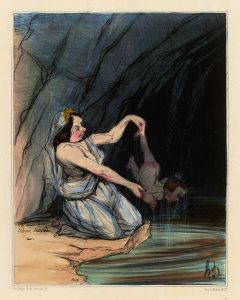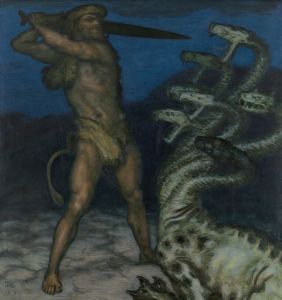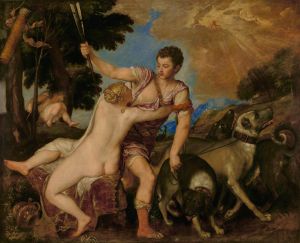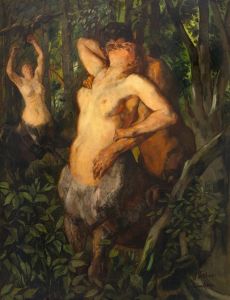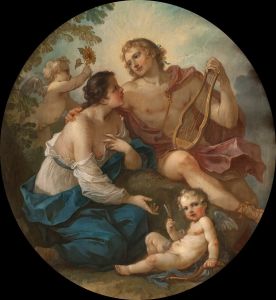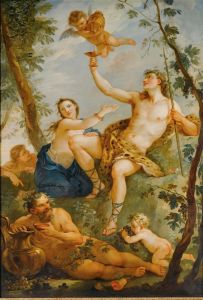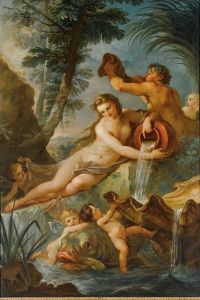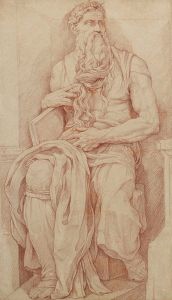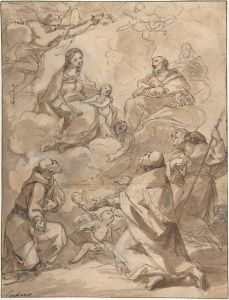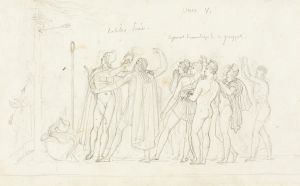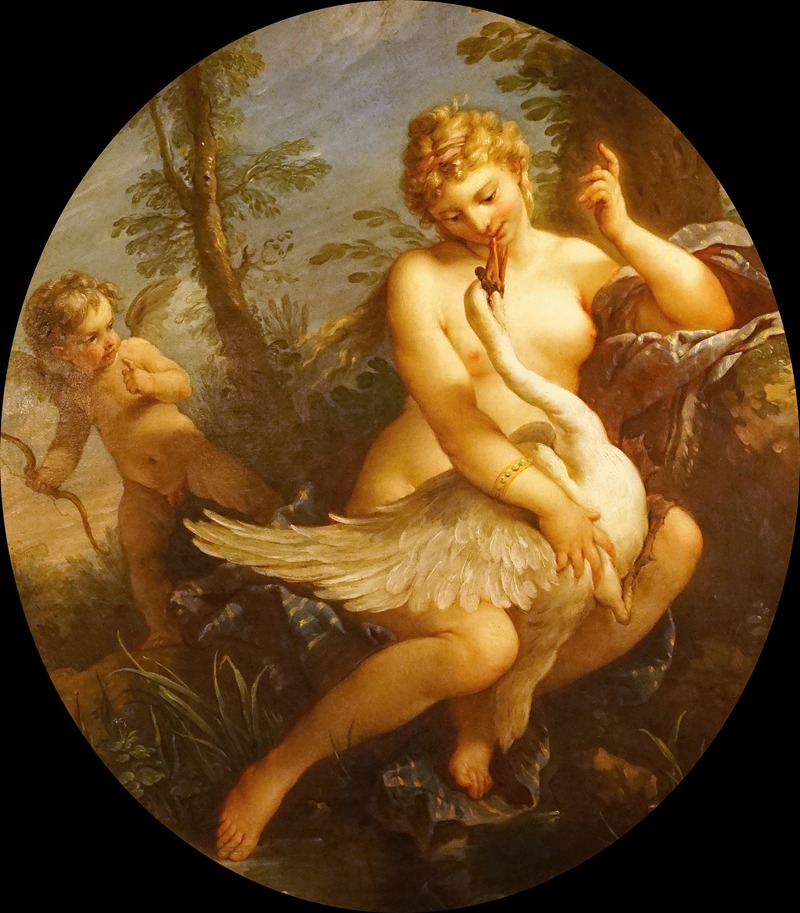
Léda et le cygne
A hand-painted replica of Charles-Joseph Natoire’s masterpiece Léda et le cygne, meticulously crafted by professional artists to capture the true essence of the original. Each piece is created with museum-quality canvas and rare mineral pigments, carefully painted by experienced artists with delicate brushstrokes and rich, layered colors to perfectly recreate the texture of the original artwork. Unlike machine-printed reproductions, this hand-painted version brings the painting to life, infused with the artist’s emotions and skill in every stroke. Whether for personal collection or home decoration, it instantly elevates the artistic atmosphere of any space.
Charles-Joseph Natoire was an 18th-century French painter known for his contributions to the Rococo movement, a style characterized by ornate detail, light colors, and playful themes. One of his notable works is "Léda et le cygne" (Leda and the Swan), which depicts the mythological story of Leda, a queen in Greek mythology, and Zeus, who transformed into a swan.
The myth of Leda and the Swan has been a popular subject in art for centuries, inspiring numerous artists to explore its themes of beauty, transformation, and divine intervention. In the story, Zeus, the king of the gods, takes the form of a swan to seduce or, in some versions, rape Leda. This union results in the birth of several children, including Helen of Troy, who would later become a central figure in the events leading to the Trojan War.
Natoire's interpretation of this myth is consistent with the Rococo style, which often embraced themes of love and mythology, rendered with a sense of elegance and grace. His painting likely captures the moment of encounter between Leda and the swan, emphasizing the sensual and dramatic aspects of the narrative. The use of soft, pastel colors and fluid lines would be typical of Natoire's approach, aiming to create a harmonious and aesthetically pleasing composition.
Charles-Joseph Natoire was born in 1700 in Nîmes, France, and trained under prominent artists such as Louis Galloche and François Lemoyne. He gained recognition for his skill in both religious and mythological subjects, eventually becoming a member of the prestigious Académie Royale de Peinture et de Sculpture in 1734. Natoire's career included significant commissions, such as the decoration of the Château de Fontainebleau and the Hôtel de Soubise in Paris.
"Léda et le cygne" would have been created during a period when Natoire was actively engaged in producing works for both private patrons and public institutions. His ability to convey complex narratives through a delicate and refined artistic language made him a sought-after painter of his time.
While specific details about the creation and current location of "Léda et le cygne" by Natoire are not extensively documented, the painting remains an example of his mastery in capturing mythological themes with a distinct Rococo flair. Natoire's work continues to be studied and appreciated for its contribution to the development of 18th-century French art, reflecting the cultural and artistic values of the period.
In summary, Charles-Joseph Natoire's "Léda et le cygne" exemplifies the Rococo style's fascination with mythology and beauty, rendered with elegance and technical skill. The painting is part of a broader tradition of artistic interpretations of the Leda and the Swan myth, showcasing Natoire's ability to blend narrative and aesthetics in a manner that resonates with the sensibilities of his time.






